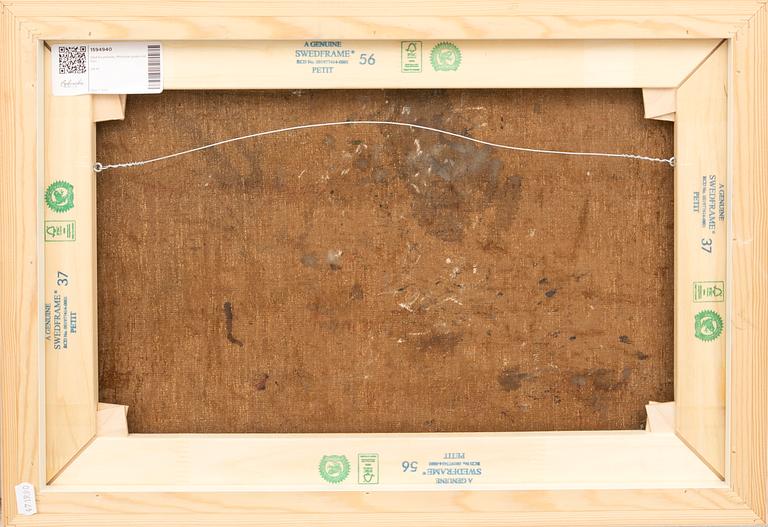Olof Krumlinde
Olof Krumlinde,
Signed Olof Krumlinde. Oil on canvas 38 x 57 cm.
Merkityksetöntä pintakulumaa.
Muut tiedot
From the 1870s onwards, young artists increasingly began to pursue their studies abroad in France, in contrast to their older colleagues who had trained in Germany. At the centre of the new style was plein air painting, where artists left their studios to paint outdoors. New products, such as ready-mixed paint in tubes, enabled artists to leave their ateliers and move freely through the city and nature with their tools.
In the 1880s, a new generation of young artists became interested in the new art in France. Olof Krumlinde moved from Düsseldorf to Paris in 1881 and was influenced by plein air painting. The year before, his three years older colleague Carl Larsson had moved to the city and was living in a studio apartment in Montmartre. Larsson wrote to Strindberg in 1881: “For this hovel, which is dreadful during the cold season, is an idyll during the warm. Imagine the garden with apricot trees, vines, lilac bushes, all kinds of flowers and salads, and a small stylish corner where the gentlemen Scandinavians can enjoy the most delightful view over Paris and unhesitatingly spit on the passers-by.”
In 1882, among others, Carl Larsson and Karl Nordström settled in the village of Grez-sur-Loing and formed an artists' colony. During these years, a resistance movement emerged among the Swedish artists in France, and Carl Larsson was a key figure in it. They were called "the opponents" and argued that the Royal Academy of Fine Arts in Sweden represented an overly conservative and stagnant art. In Ernst Josephson's studio apartment in Montmartre, Paris, the opponents met in 1884 to discuss what needed to be done to reform the Academy and modernise Swedish art. They decided on a group exhibition on Swedish soil.
The exhibition was titled "From the Banks of the Seine" and included 18 opponents. It opened in the spring of 1885 at Blanch's art salon in Kungsträdgården, Stockholm, and in many ways marked the beginning of a new era in Swedish art. In the autumn of the same year, "The Opponents' Exhibition" was organised, featuring a larger group of artists. Among these was Olof Krumlinde, who had moved from Paris to Denmark in 1882.
The opponents' second exhibition took place in Gothenburg and was inaugurated in August 1886. In connection with this, a meeting was held in Anders Zorn's, also an opponent, hotel room at Hotel Eggers. Together, they founded the Artists' Association – an association that would come to shape the Swedish art scene for several decades to come. One of the statutes stated that "to combat all anachronisms that may harm, and to promote all reforms that may be deemed beneficial to our domestic art and art industry." Olof Krumlinde was a member of the Artists' Association from 1886 to 1897.




































